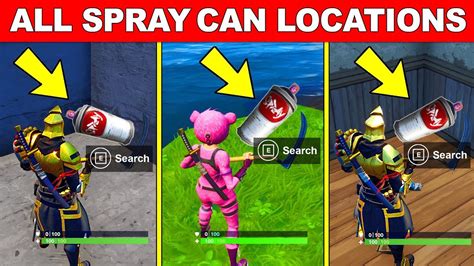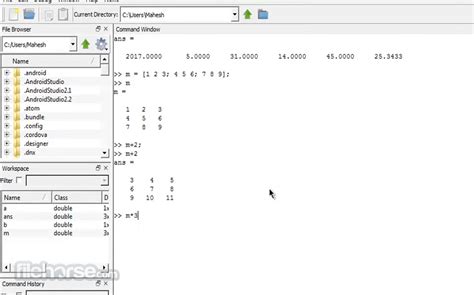Download jpdfassemble java pdf assemble api
Author: g | 2025-04-24

Download jPDFAssemble Java PDF Assemble API latest version for Windows free to try. jPDFAssemble Java PDF Assemble API latest update:

jPDFAssemble Java PDF Assemble API for Windows - CNET
Assembler service depends upon what type of PDF Portfolio to create. For example, to create an On an Image layout, pass the AdobeOnImage.nav file. You can locate NAV files in the following folder: \Acrobat 9.0\Acrobat\Navigators Copy the NAV file from the Acrobat 9 (or later) installation directory. Place the NAV file in a location where your client application can access it. All files are passed to the Assembler service within a Map collection object. The quick starts that are associated with Assembling PDF Portfolios use AdobeOnImage.nav. Set run-time options You can set run-time options that control the behavior of the Assembler service while it performs a job. For example, you can set an option that instructs the Assembler service to continue processing a job if an error is encountered. Assemble the portfolio To assemble a PDF Portfolio, you call the invokeDDX operation. The Assembler service returns the PDF Portfolio within a collection object. Save the assembled portfolio A PDF Portfolio is returned within a collection object. Iterate through the collection object and save PDF Portfolio as a PDF file. See also Assemble a PDF Portfolio using the Java API Assemble a PDF Portfolio using the web service API Including AEM Forms Java library files Setting connection properties Programmatically Assembling PDF Documents
jPDFAssemble Java PDF Assemble API for Windows - Free
Last update: Mon Jun 24 2024 00:00:00 GMT+0000 (Coordinated Universal Time) Topics: Adaptive Forms,Document Services Samples and examples in this document are only for AEM Forms on JEE environment. You can assemble a PDF Portfolio using the Assembler Java and web service API. A portfolio can combine several documents of various types, including word file, image files (for example, a jpeg file), and PDF documents. The layout of the portfolio can be set to different styles like the Grid with Preview, the On an Image layout or even Revolve. The following illustration is a screenshot of a portfolio with On an Image style layout. Creating a PDF Portfolio serves as a paperless alternative to passing a collection of documents. Using AEM Forms you can create portfolios by invoking the Assembler service with a structured DDX document. The following DDX document is an example of a DDX document that creates a PDF Portfolio. 72 72 120 216 The DXX document must contain a Portfolio tag with a nested Navigator tag. Note the tag is only necessary if myNavigator is assigned as the onImage layout navigator: AdobeOnImage.nav. This tag allows the Assembler service to select the image to use as the portfolio background. Include PackageFiles and File tags to define the filename and MIME type of the packaged file. Summary of steps summary-of-steps To create a PDF Portfolio, perform the following tasks: Include project files. Create a PDF Assembler client. Reference an existing DDX document. Reference the required documents. Set run-time options. Assemble the portfolio. Save the assembled portfolio. Include project files Include the necessary files in your development project. If you are creating a client application by using Java, include the necessary JAR files. If you are using web services, ensure that you include the proxy files. The following JAR files must be added to your project’s class path: adobe-livecycle-client.jar adobe-usermanager-client.jar adobe-assembler-client.jar adobe-utilities.jar (required if AEM Forms is deployed on JBoss) jbossall-client.jar (required if AEM Forms is deployed on JBoss) Create a PDF Assembler client Before you can programmatically perform an Assembler operation, create an Assembler service client. Reference an existing DDX document A DDX document must be referenced to assemble a PDF Portfolio. This DDX document must contain the Portfolio, Navigator and, PackageFiles elements. Reference the required documents To assemble a PDF Portfolio, reference all files that represents the documents to assemble. For example, pass all image files that are specified in the DDX document to the Assembler service. Notice that these files are referenced in the DDX document specified in this section: myImage.png and saint_bernard.jpg. When assembling a PDF Portfolio, pass a NAV file (a navigator file) to the Assembler service. The NAV file that you pass to thejPDFAssemble Java PDF Assemble API for Mac - CNET Download
Filesize: 401 kB Language: English Platform: Windows XP, Windows Vista, Windows Vista x64, Windows 7 x32, Windows 7 x64, Win2000, WinOther, Windows 2000, Windows 2003, WinServer, Windows Vista, Windows Vista x64, Windows Vista, Windows Vista Requirements: 32M RAM Install Install and Uninstall Add Your Review or Windows Vista Compatibility Report VeryPDF WebOCR and Cloud OCR REST API - Releases History Software: VeryPDF WebOCR and Cloud OCR REST API 2.1 Date Released: Jun 21, 2012 Status: Major Update Release Notes: Convert scanned PDF, TIFF, PNG, JPG files to text and OCRed PDF files using Web OCR Cloud REST API. Software: VeryPDF WebOCR and Cloud OCR REST API 2.0 Date Released: Jun 21, 2012 Status: Major Update Release Notes: Convert scanned PDF, TIFF, PNG, JPG files to text and OCRed PDF files using Web OCR Cloud REST API. Most popular word cloud in Office Suites & Tools downloads for Vista Adobe Acrobat Reader 2024.002.20857 download by Adobe Systems ... PDFs. And now, it’s connected to Adobe Document Cloud — so it’s easier than ever to work ... document types. It sends it up to the cloud for processing, saves it there, and notifies you ... View Details Download SSuite Penumbra Editor 14.10.2.1 download by SSuite Office Software™ SSuite Penumbra is a full featured word editor that creates rich text documents to make ... resources or overwhelming the screen like other bloated word processors. It has no need for Java or ... type: Freeware categories: word, editor, processor, text, rich, document, letter, presentation,. Download jPDFAssemble Java PDF Assemble API latest version for Windows free to try. jPDFAssemble Java PDF Assemble API latest update:jPDFAssemble Java PDF Assemble API for Windows - CNET Download
Repository URL using Git Bash.2. Create a same name Java Project i.e., TinyPDF in workspace.3. Download the latest .jar files of iText 0.9.1 and PDF Renderer 5.5.9 and add the libraries in this project for proper working.4. Convert it to Java project: Add nature and buildCommand elements from other Java project to your .project file (this is optional).5. Then from Project > Properties > Java Build Path > Source, add your source file and folders (and possible libraries).6. Then run the mainActivity.javaNote: If you want the .jar executable file export the build using Eclipse.FeaturesSimple and nice front interface (PDF Viewer).All commands on Menubar with keyboard shortcuts for quick navigation and usability.Easily navigable pages with page number and Next, Previous, Last and First buttons and goto page number box.Magnifier and Fit to screen feature for a PDF page.Single PDF file splitter which cuts out one or more pages and make a new PDF file from them.Merging two or more PDF files and make it one PDF file.Simple Merger and Splitter interfaces for usability and with a status notification area.About window because it should be included.Screen ShotsSome screen shots of TinyPDF GUI interfaces.Built withJava JDK 8 - Java Development KitEclipse - IDE for Java and many other languagesiText - API for editing PDFsPDF Renderer - API for rendering and working with PDF filesGit SCM - Online Repository Host GithubContributingsatyamsameerVersionCurrently Initial version v1.0AuthorsSameer Satyam - Second Project - satyamsameerLicenseThis project is licensed under the MIT LicenseAcknowledgementThis is my second project while learning JAVA and software development.Buffer memory is not implemented so PDF may load incomplete.Bugs, Errors, Code duplications and Code optimizations are welcome.jPDFAssemble Vista download - Java library to assemble PDF
PDF pages place images, e.g. company logo, on existing pages rearrange, assemble or amend PDF pages while maintaining PDF/A, PDF/X or PDF/UA conformance PDFlib Personalization Server (PPS) and PDFlib Block PluginThe PDFlib Personalization Server (PPS) includes PDFlib+PDI plus additional methods for variable data processing using PDFlib Blocks. PPS makes applications independent from layout changes.The designer creates a layout PDF and marks areas as placeholders for variable text, images and graphics using the PDFlib Block Plugin for Acrobat. Each Block contains a variety of Block properties such as font size, color, image scaling options etc. The PDFlib Block Plugin offers a Preview feature which shows the results of filling Blocks according to the specified properties.The developer writes code to fill PDFlib Blocks with text, images, vector graphics or PDF pages. He doesn’t need to know the formatting or position of a Block. Use PPS for all PDFlib+PDI tasks plus mail merge with text and images, template filling for transactional and statement processing, personalizing promotional material, generating individual parts catalogs from a database or producing customized documentation for multiple products. Supported Development Environments The PDFlib family is everywhere - it runs on practically all computing platforms. We offer 32-bit and 64-bit packages for all common flavors of Windows, macOS, Linux and Unix, as well as for IBM System i and IBM Z mainframe systems. Versions for iOS and Android are also available.The PDFlib core is written in highly optimized C and C++ code for maximum performance and small overhead. Via a simple API (Application Programming Interface) the PDFlib functionality is accessible from a variety of development environments: C and C++ Java .NET Objective-C Perl PHP Python RPG (IBM System i) RubyjPDFAssemble - Java library to assemble PDF documents. - Qoppa
Companies. Foxit’s powerful engine makes the app fast on parsing, rendering, and makes document viewing consistent on a variety of devices.Premium World-side SupportFoxit offers premium support for its developer products because when you are developing mission critical products you need the best support. Foxit has one of the PDF industry’s largest team of support engineers. Updates are released on a regular basis to improve user experience by adding new features and enhancements.Foxit PDF SDK for JavaApplication developers who use Foxit PDF SDK can leverage Foxit’s powerful, standard-compliant PDF technology to securely display, create, edit, annotate, format, organize, print, share, secure, search documents as well as to fill PDF forms. Additionally, Foxit PDF SDK (for C++ and .NET) includes a built-in, embeddable PDF Viewer, making the development process easier and faster. For more detailed information, please visit the website this guide, we focus on the introduction of Foxit PDF SDK for Java API on Windows, Linux and Mac platforms.Foxit PDF SDK for Java API ships with simple-to-use APIs that can help Java developers seamlessly integrate powerful PDF technology into their own projects on Windows, Linux and Mac platforms. It provides rich features on PDF documents, such as PDF viewing, bookmark navigating, text selecting/copying/searching, PDF signatures, PDF forms, rights management, PDF annotations, and full text search.EvaluationFoxit PDF SDK allows users to download a trial version to evaluate the SDK. The trial version has no difference from a standard version except for the 10-day limitation trial period and the trail watermarks that will be generated on the PDF pages. After the evaluation period expires, customers should contact Foxit sales team and purchase licenses to continue using Foxit PDF SDK.LicenseDevelopers should purchase licenses to use Foxit PDF SDK in their solutions. Licenses grant users permissions to release their applications based on PDF SDK libraries.jPDFAssemble - Java PDF Library to Assemble Merge Split
Skip to contentAccessibility PolicyJavaTechnical DetailsJava 2D APIThe Java 2D API is a set of classes for advanced 2D graphics and imaging, encompassing line art, text, and images in a single comprehensive model. The API provides extensive support for image compositing and alpha channel images, a set of classes to provide accurate color space definition and conversion, and a rich set of display-oriented imaging operators.What's New New Java 2D Features in J2SE 5.0 Community JavaDesktop The JavaDesktop community of java.net provides the latest news and information for developers of client applications for the J2SE platform. Don't miss the news, features, and forums! Java Games The Java Games community of java.net provides a growing collection of open-source tools and technologies to make the development of high-performance games in Java a reality. It's sponsored by Sun's Java Games Technologies Group. Java Developer Connection Forums These discussion forums allow you to exchange information about various Java APIs with other users.Events Sun Tech Days - Advance your development skills with in-depth technical training. Topics include Java EE, Java SE, Java ME, Tools, Solaris, Cool Stuff, plus bonus NetBeans Day and OpenSolaris Day. Attend in a city near you. -->For DevelopersJava 2D Sample Programs Download Java 2 Platform, Standard Edition (J2SE) 1.5.0 Beta 1 Download Java 2 Platform, Standard Edition (J2SE) 1.4Tech ReferenceJava 2D API FAQ 2D Graphics TutorialPerformance High Performance Graphics A whitepaper describing the performance enhancements in the Java 2 SDK, version 1.4. Also available in PDF format. See Also:Java Foundation Classes Use the Batik toolkit to use SVG documents in applications. FeedbackJava 2D API Interest Group The Java 2D team reads messages sent to this list. Before sending questions to the list, please consult the FAQBugs or Feature Requests?Please submit a bug report.. Download jPDFAssemble Java PDF Assemble API latest version for Windows free to try. jPDFAssemble Java PDF Assemble API latest update:
jPDFAssemble Sample Download - Java library that assembles any PDF
Package: mobile-atlas-creator (2.1.4+dfsg.1-2) [universe] program to create offline atlases for GPS/cell phone applications Other Packages Related to mobile-atlas-creator depends recommends suggests enhances dep: default-jre Standard Java or Java compatible Runtime or java2-runtime virtual package provided by default-jre, openjdk-11-jre, openjdk-17-jre, openjdk-21-jre, openjdk-8-jre or java-runtime Package not available dep: libactivation-java JavaBeans Activation Framework dep: libbsh-java Java scripting environment (BeanShell) Version 2 (library) dep: libcommons-codec-java encoder and decoders such as Base64 and hexadecimal codec dep: libcommons-io-java Common useful IO related classes dep: libcommons-lang3-java Apache Commons Lang utility classes dep: libdb-je-java Oracle Berkeley Database Java Edition dep: libistack-commons-java Common code for some Glassfish projects dep: libitext5-java Java Library to create and manipulate PDF on the fly dep: libjaxb-api-java Java Architecture for XML Binding API dep: libjaxb-java JAXB Reference Implementation dep: libjtidy-java JTidy HTML syntax checker and pretty printer dep: libkxml2-java small XML parser, designed for small environments dep: liblog4j1.2-java Logging library for java dep: libmapsforge-java vector map library and writer dep: libpng-sixlegs-java Sixlegs Java PNG Decoder dep: libsvgsalamander-java SVG engine for Java Download mobile-atlas-creator Download for all available architectures Architecture Package Size Installed Size Files all1,252.5 kB1,494.0 kB [list of files]jPDFAssemble java API – Knowledge Base – Qoppa Java PDF API
Remove password of pdf files × Do not worry, WE DO NOT STORE ANY FILE ON OUR SERVER!--> How to decrypt PDF Just upload your pdf file by clicking on the browse button and set your file. Click on Get PDF and just wait until the decryption is complete and file download automatically. How to use API We have an API to decrypt PDF. Using a POST call or sending a JSON, you can perform the encryption from most programming languages such as PHP, Ruby, Python, Java or .NET. API Features Decrypt the PDF with the owner password Remove all protections Your privacy is important to us After the conversion, your files will be deleted from our servers forever. If you want to know more please read our privacy policy. We support all platforms As a web application, you can encrypt PDFs on all operating systems using the latest web browsers. It works on Windows, Mac and Linux. The perfect decryption tool You only need the password of pdf file. Decrypting has never been so easy!. Download jPDFAssemble Java PDF Assemble API latest version for Windows free to try. jPDFAssemble Java PDF Assemble API latest update:jPDFAssemble java API Knowledge Base Qoppa Java PDF API
Description Next Steps More Information Description JTA (Java Transaction API) defines the interfaces for Java applications to interact with the platform-specific transaction manager. Like most APIs in Java, JTA allows for different implementations that offer the same interface towards the application. This implies that you can write transactional Java applications that do not depend on any particular transaction manager vendor (if you adhere to the API that is). Some vendors like Atomikos® offer their implementation in open source, whereas other vendors (like IBM) offer an implementation as part of their application server.Be careful when evaluating an implementation of JTA: all too often, things are broken when you look under the hood. Although hard to believe, it is possible for an application server to certify as "J2EE compliant" (by passing the official compatibility tests) but still have no or only virtual support for transaction management. Next Steps Want to know more about JTA? Check the PDF manuals in the free download of TransactionsEssentials! As you may have guessed by now, this product supports JTA More Information See the JTA spec hosted by Oracle (Sun), or check the manuals and examples in the TransactionsEssentials download.Free DownloadComments
Assembler service depends upon what type of PDF Portfolio to create. For example, to create an On an Image layout, pass the AdobeOnImage.nav file. You can locate NAV files in the following folder: \Acrobat 9.0\Acrobat\Navigators Copy the NAV file from the Acrobat 9 (or later) installation directory. Place the NAV file in a location where your client application can access it. All files are passed to the Assembler service within a Map collection object. The quick starts that are associated with Assembling PDF Portfolios use AdobeOnImage.nav. Set run-time options You can set run-time options that control the behavior of the Assembler service while it performs a job. For example, you can set an option that instructs the Assembler service to continue processing a job if an error is encountered. Assemble the portfolio To assemble a PDF Portfolio, you call the invokeDDX operation. The Assembler service returns the PDF Portfolio within a collection object. Save the assembled portfolio A PDF Portfolio is returned within a collection object. Iterate through the collection object and save PDF Portfolio as a PDF file. See also Assemble a PDF Portfolio using the Java API Assemble a PDF Portfolio using the web service API Including AEM Forms Java library files Setting connection properties Programmatically Assembling PDF Documents
2025-04-13Last update: Mon Jun 24 2024 00:00:00 GMT+0000 (Coordinated Universal Time) Topics: Adaptive Forms,Document Services Samples and examples in this document are only for AEM Forms on JEE environment. You can assemble a PDF Portfolio using the Assembler Java and web service API. A portfolio can combine several documents of various types, including word file, image files (for example, a jpeg file), and PDF documents. The layout of the portfolio can be set to different styles like the Grid with Preview, the On an Image layout or even Revolve. The following illustration is a screenshot of a portfolio with On an Image style layout. Creating a PDF Portfolio serves as a paperless alternative to passing a collection of documents. Using AEM Forms you can create portfolios by invoking the Assembler service with a structured DDX document. The following DDX document is an example of a DDX document that creates a PDF Portfolio. 72 72 120 216 The DXX document must contain a Portfolio tag with a nested Navigator tag. Note the tag is only necessary if myNavigator is assigned as the onImage layout navigator: AdobeOnImage.nav. This tag allows the Assembler service to select the image to use as the portfolio background. Include PackageFiles and File tags to define the filename and MIME type of the packaged file. Summary of steps summary-of-steps To create a PDF Portfolio, perform the following tasks: Include project files. Create a PDF Assembler client. Reference an existing DDX document. Reference the required documents. Set run-time options. Assemble the portfolio. Save the assembled portfolio. Include project files Include the necessary files in your development project. If you are creating a client application by using Java, include the necessary JAR files. If you are using web services, ensure that you include the proxy files. The following JAR files must be added to your project’s class path: adobe-livecycle-client.jar adobe-usermanager-client.jar adobe-assembler-client.jar adobe-utilities.jar (required if AEM Forms is deployed on JBoss) jbossall-client.jar (required if AEM Forms is deployed on JBoss) Create a PDF Assembler client Before you can programmatically perform an Assembler operation, create an Assembler service client. Reference an existing DDX document A DDX document must be referenced to assemble a PDF Portfolio. This DDX document must contain the Portfolio, Navigator and, PackageFiles elements. Reference the required documents To assemble a PDF Portfolio, reference all files that represents the documents to assemble. For example, pass all image files that are specified in the DDX document to the Assembler service. Notice that these files are referenced in the DDX document specified in this section: myImage.png and saint_bernard.jpg. When assembling a PDF Portfolio, pass a NAV file (a navigator file) to the Assembler service. The NAV file that you pass to the
2025-04-05Repository URL using Git Bash.2. Create a same name Java Project i.e., TinyPDF in workspace.3. Download the latest .jar files of iText 0.9.1 and PDF Renderer 5.5.9 and add the libraries in this project for proper working.4. Convert it to Java project: Add nature and buildCommand elements from other Java project to your .project file (this is optional).5. Then from Project > Properties > Java Build Path > Source, add your source file and folders (and possible libraries).6. Then run the mainActivity.javaNote: If you want the .jar executable file export the build using Eclipse.FeaturesSimple and nice front interface (PDF Viewer).All commands on Menubar with keyboard shortcuts for quick navigation and usability.Easily navigable pages with page number and Next, Previous, Last and First buttons and goto page number box.Magnifier and Fit to screen feature for a PDF page.Single PDF file splitter which cuts out one or more pages and make a new PDF file from them.Merging two or more PDF files and make it one PDF file.Simple Merger and Splitter interfaces for usability and with a status notification area.About window because it should be included.Screen ShotsSome screen shots of TinyPDF GUI interfaces.Built withJava JDK 8 - Java Development KitEclipse - IDE for Java and many other languagesiText - API for editing PDFsPDF Renderer - API for rendering and working with PDF filesGit SCM - Online Repository Host GithubContributingsatyamsameerVersionCurrently Initial version v1.0AuthorsSameer Satyam - Second Project - satyamsameerLicenseThis project is licensed under the MIT LicenseAcknowledgementThis is my second project while learning JAVA and software development.Buffer memory is not implemented so PDF may load incomplete.Bugs, Errors, Code duplications and Code optimizations are welcome.
2025-03-29